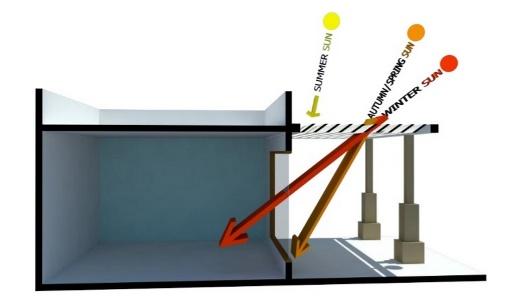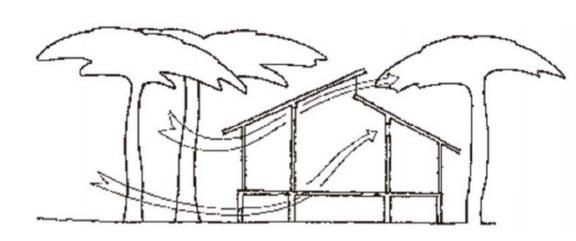
2 minute read
FIGURE 8 OPENINGS FIGURE 9 VENTILATION
from DISSERTATION
by Bhuvana
beauty and cultural legacy. Andhra Pradesh features some of the most remarkable historic sites in the region, as well as a long tradition of Deccan culture and history.
2.2 INFLUENCE OF CLIMATE ON ARCHITECTURE [HOT & HUMID]
Advertisement
Climate has always been a concern in building design, and its control is a fundamental factor influencing architecture. Because climate imposes limits—the difficulty of designing climate-friendly buildings—the form of buildings has been heavily impacted by climatic constraints. A study at architectural history may give instances that demonstrate the role of climate in the evolution of architectural features. At home, we discover evidence of highly developed temperature control science in Indian architecture, which resulted in such distinctive aspects of Indian architecture as chajja, jalis, deep rectangular piers, inner courtyards, and so on.(Ayodele et al., 2020)
There is usually a lot of thermal mass or insulation in buildings in cold climates. In order to prevent heat loss, they are normally enclosed, and any openings like windows seem to be tiny or non-existent. On the other hand, structures in warm climates are made of lighter materials and have numerous apertures that provide extensive cross-ventilation. Buildings designed for a continental climate must be resistant to temperature changes and flexible enough to adjust to seasonal changes. In order to facilitate ventilation and temperature regulation, vernacular structures in hot, dry and semi-arid settings frequently include a variety of distinctive features. In the Middle East, these components include architectural features like screen walls, reflected light, wind catchers, and courtyard gardens with water features. According on the amount of precipitation in the area, buildings take on a variety of shapes. As a result, many regions that experience regular rainfall or monsoon seasons have stilted buildings. In regions where there is a lot of rain, flat roofs are rare. The effects of climate on architectural and building forms are considerable. Using local resources and skills in architecture has the ability to protect mankind from the upcoming issues brought on by climate change. A shelter's main purposes are to offer seclusion and thermal comfort. In order to promote thermal comfort, the structure turns the external environment into conditions ideal for interior activities. Due to the hot and humid environment that dominates the southernmost region of India. Weather conditions, including temperature, humidity, precipitation, sky conditions, sun radiation, wind, and vegetation are some of the defining characteristics of hot and humid climate zones.
Characteristic features of buildings in hot and humid climatic zones are
VENTILATION: When designing structures in hot, humid regions, ventilation is a crucial factor to take into account. An immediate physiological cooling effect is a direct result of air movement. Cross ventilation must be made feasible by the placement of the structures. Oblique winds between 30 and 120 degrees to the wall can offer cross-ventilation. Additionally, vegetation can provide shade and deflection. A further benefit of using attic spaces for ventilation is that it lessens solar heating through the roof.
Figure 8 OPENINGS
[SOURCE - https://www.re-thinkingthefuture.com/rtffresh-perspectives/a2128-10-things-to-rememberwhiledesigning-in-hot-humid-climate/] Figure 9 VENTILATION

[SOURCE - https://www.re-thinkingthefuture.com/rtffresh-perspectives/a2128-10-things-to-rememberwhiledesigning-in-hot-humid-climate/]










